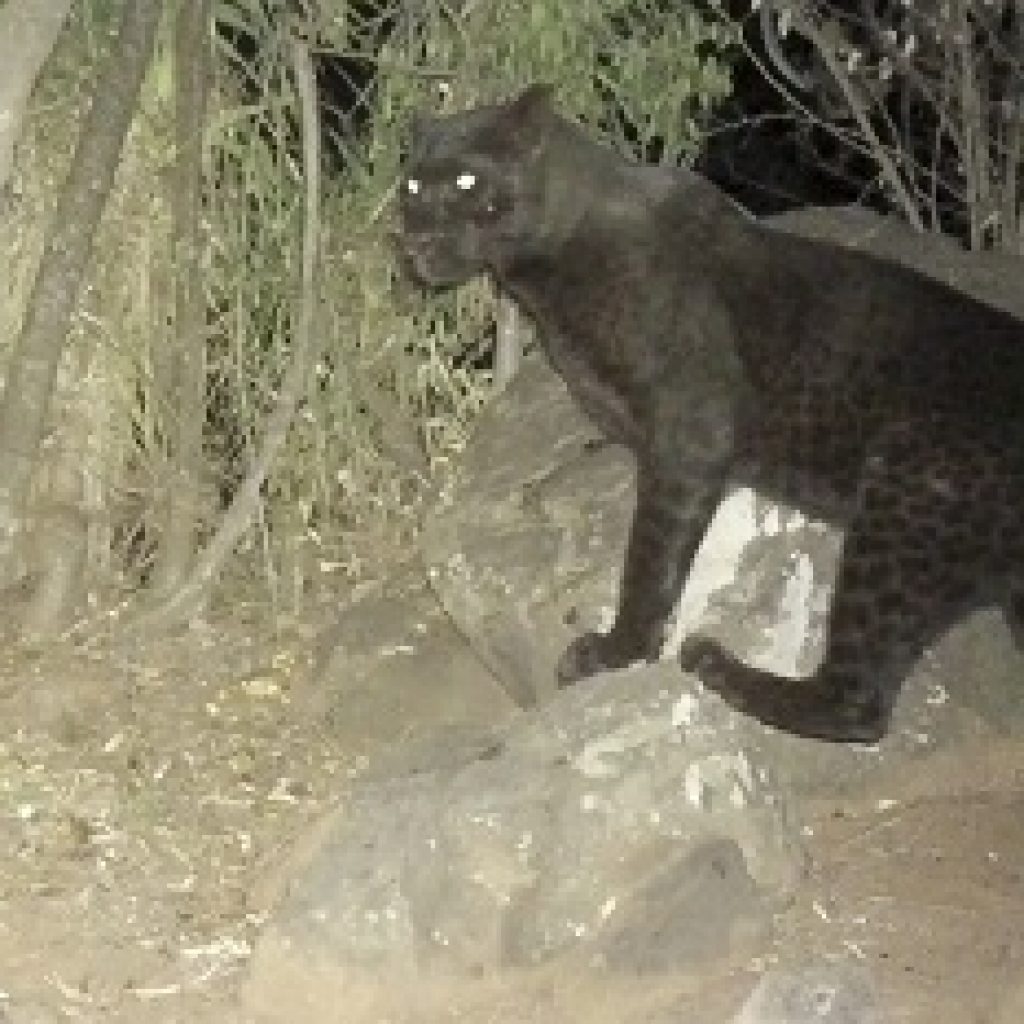
Most of the wildlife in Kenya lives outside of government parks and reserves, so it is critical to work with communities that are sharing land and resources with the wildlife that we want to protect. To better understand the ways that people are interacting with and perceiving leopards, in June 2017 a collaborative partnership between San Diego Zoo Global and Loisaba Conservancy was set up to conduct social and ecological research on the local leopard population in and around Loisaba.
Researchers from San Diego Zoo Global have been using camera traps at Loisaba Conservancy and neighbouring properties in order to understand population dynamics of leopards, and the mechanisms that drive human-wildlife conflict to assess the efficacy of management decisions aimed at mitigating conflict.
We are very excited to hear that these camera traps have captured rare footage of melanistic leopards, otherwise known as black panthers. Melanism is the result of a gene that causes a surplus of pigment in the skin or hair of an animal so that it appears black.
“Regionally we’ve heard reports of black leopards living here in Kenya, but high-quality footage or imagery to support these observations has always been missing,” said Nicholas Pilfold, Ph.D., San Diego Zoo Global scientist. “That’s what we’ve provided here with our cameras, and now we’re able to confirm what has been long suspected about black leopards living in Laikipia County.”
“Black panthers are uncommon, only about 11% of leopards globally are black. But black panthers in Africa are extremely rare. Our new paper confirms black leopards living in Laikipia County, Kenya, and our observations in the paper are collectively the first confirmed cases in Africa in nearly 100 years. It is certain black panthers have been there all along, but good footage that could confirm it has always been absent until now.”
Only a single recorded sighting had been confirmed, as recently as 2017, when in 1909 a photograph was taken in Addis Ababa, Ethiopia. It was stored in the collections of the National Museum of Natural History in Washington, D.C. Their range across much of the continent has shrunk by at least 66 percent due to habitat loss and prey decline.
African leopards are listed as Vulnerable on the International Union for Conservation of Nature’s (IUCN) Red List of Threatened Species. Habitat loss and fragmentation, competition for prey, conflict with livestock and farmers, and hunting have reduced the number of leopards throughout Africa, although the total extent of this population decline is still unknown.
Guests staying at Elewana Loisaba Tented Camp and Elewana Loisaba Star Beds may be lucky enough to spot this rare and beautiful leopard. They can also learn about the cutting-edge conservation efforts in the area and our Partners, who strive to protect our wildlife and work with the communities to ensure this prime ecosystem is remains as it should.
Dr. Nicholas Pilfold Profile:
Dr. Nicholas Pilfold serves San Diego Zoo Global as a Scientist in Population Sustainability. Nicholas is a large carnivore biologist focused mainly on bear species, but his research also extends to large cats.
Nicholas leads and collaborates on projects for four large carnivore species: polar bears, African leopards, Andean bears, and giant pandas. Nicholas’ research is focused on several themes within





About The Author: Alia Bellamy
More posts by Alia Bellamy